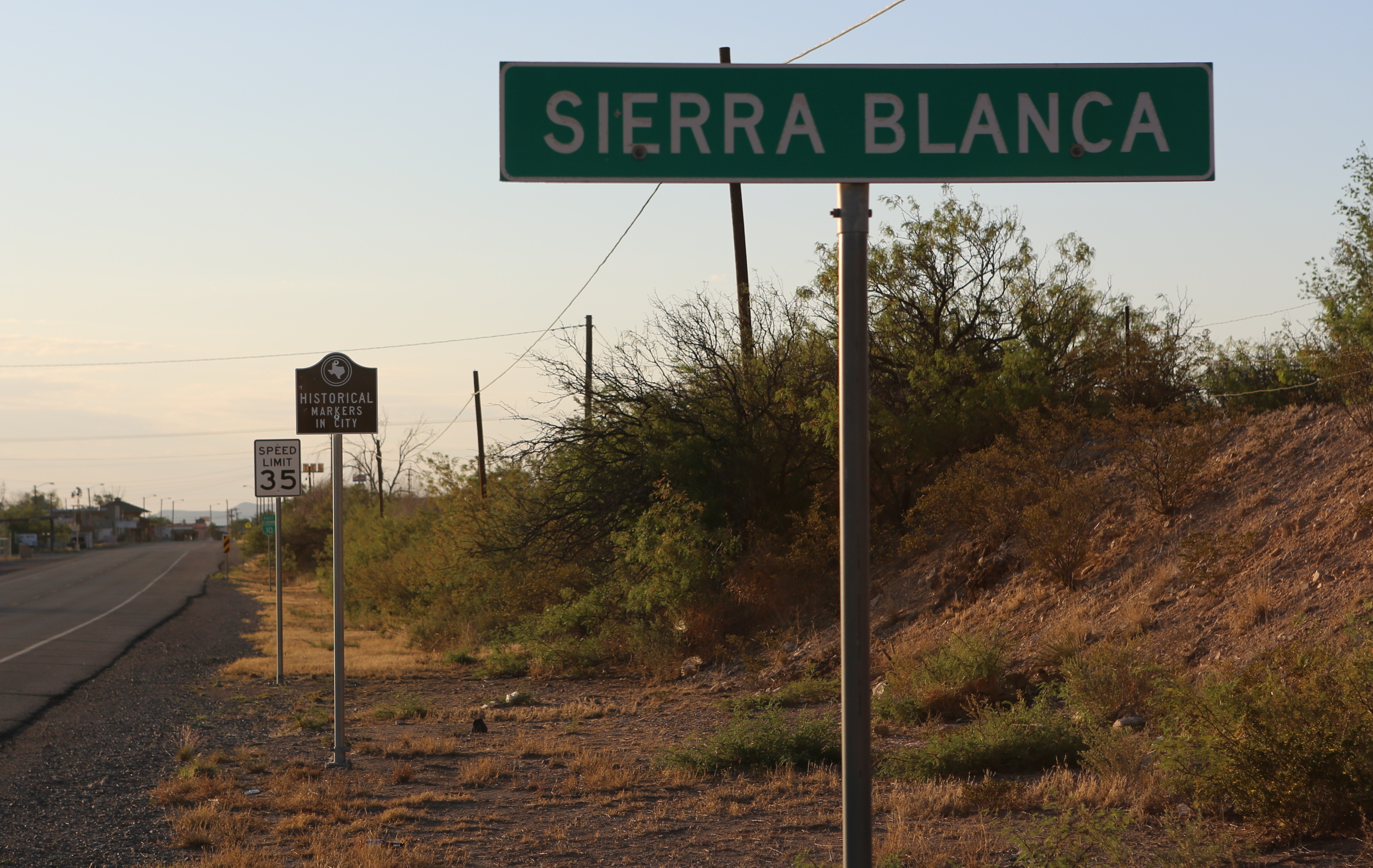It all came back after I read a story about a smuggler in San Diego who charged two illegal immigrants $3,200 to get into his trunk so they could be smuggled across the U.S. border.
The trapped illegal immigrants – Casas-Blanco and Quiroz-Casas – later died of hyperthermia and mechanical asphyxiation.
Twenty eight years ago, Herald-Post Photographer Billy Calzada and I were sent to Sierra Blanca, which is 86 miles from El Paso.
The Associated Press reported that 18 bodies had been found inside a boxcar that had left El Paso hours ago. Billy grabbed his camera gear, I snatched my reporter’s notebook, and we rushed out of the newsroom, got on I-10, heading east to Sierra Blanca, Texas.
It was strange and surreal when we got there. Nobody was there at a lone boxcar that sat next to a desolate, two-lane road.
After looking at one end of the tracks to the other, I told Billy, “I guess this is it.”
For the most part, it was quiet with only the sound of a few birds and buzzing flies as we approached the boxcar.
Minutes earlier, we had driven past the boxcar before we made a U-turn after driving two miles. We didn’t see any yellow crime scene tape or local police and U.S. Border Patrol agents conducting an investigation on the deaths.
Earlier, we had stopped at a Sheriff’s station in Sierra Blanca. There were a few officers there milling around. I asked one where the boxcar was located. He said to drive a mile or so straight down the road that was parallel to the railroad tracks and we’d run into the boxcar. He said the bodies had been taken out.
“Where are the bodies?” I asked.
“Some, are right behind you,” he replied.
I turned and saw a line of hearses that were parked about 20 yards away. One of the hearse’s doors was open and there were three black body bags inside.
Inside the Boxcar
Billy and I looked inside the boxcar and there were things strewn everywhere along with dry blood on the floor and the steel walls. The smell of urine still lingered in the air.
Billy questioned whether we could go into the boxcar, expecting for authorities to drive up anytime.
“There is no crime scene tape. Everybody left,” I said, hopping into the boxcar.
I started taking notes, always believing that certain little details paint a picture for readers of who people are, where they have been, and where they might be going in life. I immediately began walking around the boxcar taking an inventory of the things inside.
The next day my story along with those of other reporters was published in the Herald-Post. The July 3, 1987 headline was big and bold: “Evidence Shows Aliens’ Deaths were ‘excruciating.'”
I wrote, in part: “Apparently, the aliens knew that their journey was going to be long, arduous. They had prepared for it.
Food for the trip and plastic water containers were scattered around the car – bearing the Spanish Del Monte Corn label – stood near one of the doors. Two other cans of corn, neatly wrapped inside a light brown plastic bag, could be seen nearby.
One of the passenger’s carried a large transparent plastic bag full of animal crackers. Plastic one-gallon milk containers, probably used to carry water, were empty. The containers looked like they had been flung across the boxcar. Some were crushed.
Authorities said the occupants, in an effort to ward off the 120-degree heat inside the rail car, had taken off their clothes to cool themselves.”
The Lone Survivor
A coyote – a person who smuggles illegal immigrants into the United States – had put 19 people into a boxcar in downtown El Paso early that morning, threw a five-inch railroad spike inside, closed the door and left.
By the time the train raced across West Texas to Sierra Blanca, the inside of the boxcar had become an oven with the desert temperatures soaring. The train journey from El Paso to Sierra Blanca was 14 hours.
“The lack of air plus the extreme heat – it must have been an excruciating death,” Bill Harrington, assistant chief patrol agent for the Border Patrol in El Paso is quoted as saying in the story. “They had heat convulsions. There was a lot of blood inside the car.”
There was one survivor, Miguel Tostado Rodriguez – who used a five-inch rail spike to carve a foot long hole through the thick wooden boxcar floor I squatted on the boxcar floor and felt how hard the thick boards were.
A Border Patrol agent said that it took the 21-year-old Tostado Rodriguez two hours to finally punch through the thick and hard floor board.
Tostado Rodriguez’s resourcefulness and patience probably saved his life, said the agent.
The Border Patrol Agent
Stanley Saathoff, a Border Patrol supervisor was on duty when the train filled with dead bodies was stopped by the Border Patrol for a routine inspection in Sierra Blanca.
Saathoff was searching for illegal immigrants and walked down the long row of boxcars. Near the end, Saathoff heard cries, desperate cries coming from inside the boxcar.
“He said, ‘We need help. Could you help us? Can you please help us. We need help.” said Saathoff.
He said the person inside the boxcar spoke real good English.
Saathoff opened the door and Tostado Rodriguez stood waiting, behind him 18 dead people.
“Their feet and their hands were white,” Saathoff said. “Body fluids had released – stiff bodies. Blood was dried. Some of them bled a little. So I determined that they were dead.”
The Notebook
As I stood in the middle of the boxcar writing on my notebook, I looked down, near my foot and beneath an old jacket, tucked half-under I saw a notebook that was used as a diary, to record thoughts and musings.
I knelt down, picked it up and started reading it, and quickly became absorbed by what was written. It was written in Spanish.
As reporters began arriving, I barely heard their voices. I didn’t look up. I just kept reading. Someone standing close by asked what I had in my hand. I looked up. He had a TV camera closely pointed at my face and the notebook.
“It’s some writing, a notebook,” I said and continued reading.
“What does it say?” He said.
“A lot of things,” I replied.
On the way back to El Paso, Billy and I talked about the story. I pulled out the notebook, and said, “Look, check it out” and told him what I had read.
” And, we got it,” I said.
Before he could utter a word, I said, “Look, they’re probably going to sweep the boxcar out, put everything into plastic bags and toss all that stuff into a dumpster. It’s nothing but trash to them.”
It was a great story about the notebook that was picked up by the Associated Press. I got calls from the New York Times and the Wall Street Journal and other newspaper asking if they could have copies of the notebook.
No, way, I said. It’s our story.
Two days later, a Border Patrol agent dropped by the newsroom to pick up the notebook to return it to the victim’s family. We had made copies of it. He said, thank you and quickly left. We would have nailed him with questions if he would have argued that we shouldn’t have taken the notebook.
The Poems and Thoughts of the Victims
Before I wrote my story that evening, I gave the 55-page notebook to then City Editor Eduardo Paz Martinez, who was fluent in Spanish and would do a better job in translating.
Two of the victims – Albino Gomez Hernandez and Rosario Caldera Salazar – wrote their thoughts, Paz-Martinez wrote in the newspaper article.
“To their relatives in Mexico, they were poets, songwriters, letter-writers and dreamers,” Paz-Martinez surmised.
“It was important to them to note that they paid 3,500 pesos to get from one small Mexican town to another after they began their journey,” City Editor Paz Martinez wrote.
One entry in the notebook: “Justs da strit neim plis.” (Suggests: Just the street name please).
And, “Ai niid tu toc wid dat persen. Aim jis friend.”
Paz-Martinez said the writings suggest that Gomez Hernandez and Caldera Salazar were childhood friends.
There are long epistles to unnamed recipients, Paz Martinez wrote.
“I found myself in a large garden,” Caldera Salazar wrote eloquently. “It was Saturday morning. The day appeared one of promise. The sun shined high, reflecting off the leaves of grass…”
There were several pages of mathematics: “It may be irrelevant to their traveler’s expense but one of them wanted the answer to 675 x 72.” Paz Martinez wrote.
There was a letter from Caldera Salazar to a woman named Laura Manuela written Feb. 12, 1987, which expresses warmth and love, according to Paz Martinez.
“‘My love,’ it begins. ‘This will be in your hands with my anxious desire to again have you close to me. What more could I want than to feel your body, your warmth, your kisses.’
Adding, “‘But I now find out that your sentiments are for another and for that I understand your coldness toward me. …Manuela, tell me when you will return. It doesn’t matter if its take a long time, assure me you will return…I don’t say I offer you more material things…because material things don’t last. What comes from within lasts an eternity…That is all from the one who loves you.'”
It is signed simply, Rosario Caldera Salazar.
Two Faces, Two Lives, The Illegal Immigrant Legacy
There are no hurriedly scribbled notes to relatives that would indicate they were dying, Paz-Martinez conclude in his article.
“No last words for their loved ones. No words of anger. The little diary, probably worth no more than 50 pesos, nonetheless left a valuable amount of information,” Paz Martinez wrote. “Within its few pages runs the legacy of the illegal alien.”
I am glad that I found the notebook and the Herald-Post wrote a story about it. It put a face on millions of the desperate people who cross the border to escape Mexico’s poverty, seeking opportunities to make money, carve out dreams, all the while often at their own peril including risking death to do so.
Thousands like the 18 in the boxcar and the two in the car trunk never made it to their destinations. They died along the way to what they were seeking – a better life.
(Feature Photo: KUT.org)
***************************************************************
FOOTNOTE:
WASHINGTON —U.S. Immigration and Customs Enforcement’s or ICE, Homeland Security Investigations released the names and photographs of 10 fugitives wanted for human trafficking crimes, in the hope that tips from the public could lead to the identification and arrest of these individuals.
By presidential proclamation, January is National Slavery and Human Trafficking Prevention Month.


